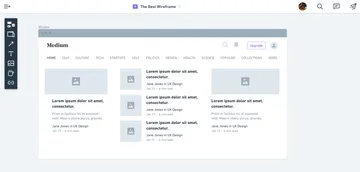A Viget Glossary: What We Mean and Why it Matters - Part 1

Melissa Southern, Former Senior Project Manager
Article Categories:
Posted on
Building a shared lexicon with clients is an important first step for any project. We’ve compiled a cross-discipline list of commonly-used, but often-misunderstood, terms used at Viget.
Viget has helped organizations design and develop award-winning websites and digital products for 20 years. In that time, we’ve been lucky to create long-term relationships with clients like Puma, the World Wildlife Fund, and Privia Health, and, throughout our time working together, we’ve come to understand each others’ unique terminology. But that isn’t always the case when we begin work with new clients, and in a constantly-evolving industry, we know that new terminology appears almost daily and organizations have unique definitions for deliverables and processes.
Kicking off a project always initiates a flurry of activity. There are contracts to sign, team members to introduce, and new platforms to learn. It’s an exciting time, and we know clients are anxious to get underway. Amidst all the activity, though, there is a need to define and create a shared lexicon to ensure both teams understand the project deliverables and process that will take us from kickoff to launch.
Below, we’ve rounded up a few terms for each of our disciplines that often require additional explanation. Note: our definitions of these terms may differ slightly from the industry standard, but highlight our interpretation and use of them on a daily basis.
User Experience
Research
In UX, there is a proliferation of terms that are often used interchangeably and mean almost-but-subtly-not the same thing. Viget uses the term research to specifically mean user research — learning more about the users of our products, particularly how they think and behave — in order to make stronger recommendations and better designs. This can be accomplished through different methodologies, depending on the needs of the project, and can include moderated usability testing, stakeholder interviews, audience research, surveys, and more. Learn more about the subtleties of UX research vocabulary in our post on “Speaking the Same Language About Research”.
Wireframes
We use wireframes to show the priority and organization of content on the screen, to give a sense of what elements will get a stronger visual treatment, and to detail how users will get to other parts of the site. Wireframes are a key component of website design — think of them as the skeleton or blueprint of a page — but we know that clients often feel uninspired after reviewing pages built with gray boxes. In fact, we’ve even written about how to improve wireframe presentations. We remind clients that visual designers will step in later to add polish through color, graphics, and typography, but agreeing on the foundation of the page is an important and necessary first step.

Prototypes
During the design process, it’s helpful for us to show clients how certain pieces of functionality or animations will work once the site is developed. We can mimic interactivity or test a technical proof of concept by using a clickable prototype, relying on tools like Figma, Invision, or Principle. Our prototypes can be used to illustrate a concept to internal stakeholders, but shouldn’t be seen as a final approach. Often, these concepts will require additional work to prepare them for developer handoff, which means that prototypes quickly become outdated. Read more about how and when we use prototypes.
Navigation Testing (Treejack Testing)
Following an information architecture presentation, we will sometimes recommend that clients conduct navigation testing. When testing, we present a participant with the proposed navigation and ask them to perform specific tasks in order to see if they will be able to locate the information specified within the site’s new organization. These tests generally focus on two aspects of the navigation: the structure of the navigation system itself, and the language used within the system. Treejack is an online navigation testing tool that we like to employ when conducting navigation tests, so we’ll often interchange the terms “navigation testing” with “treejack testing”.
Learn more about Viget’s approach to user experience and research.